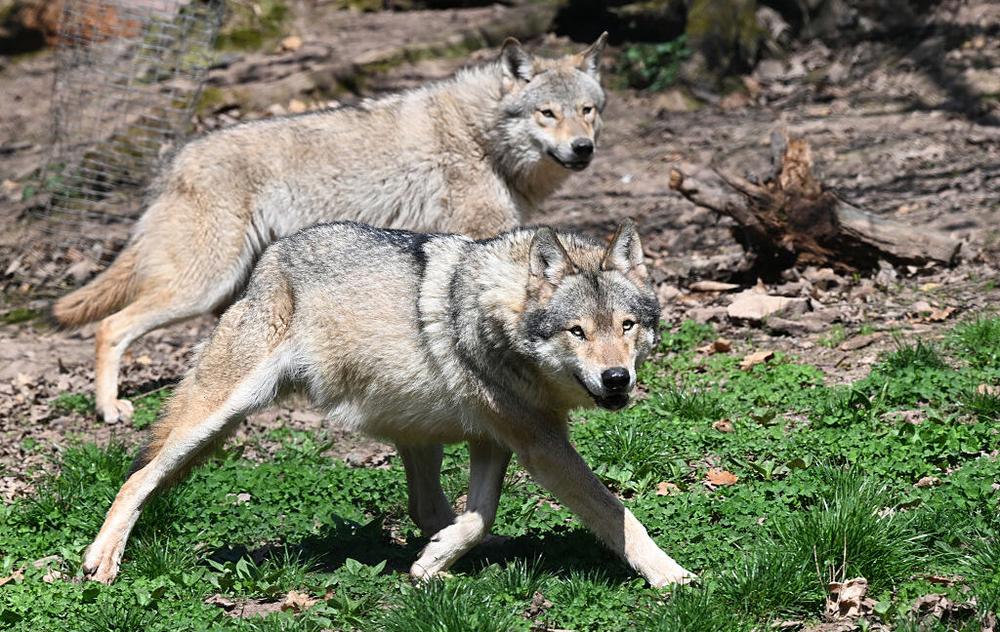Back in May 2025, the European Parliament changed the status of wolves in the EU from “strictly protected” to “protected,” which opened the way for its member states to allow hunting under certain conditions, such as protecting livestock. One of the arguments behind this change was that the “tolerance of modern society towards wolves” led to the emergence of “fearless wolves” that are no longer afraid of people.
“Regulators made it clear though that there is no scientific evidence to back this up,” says Michael Clinchy, a zoologist at the Western University London, Canada. “So we did the first-of-its-kind study to find out if wolves have really lost their fear of humans. We proved there is no such thing as a fearless wolf.”
Red riding hood
The big bad wolf trope is found in plenty of our myths and fables, with Little Red Riding Hood being probably the most famous example. This mythical fear of wolves, combined with real damage to livestock, led to extensive hunting. By the mid-20th century, we’d pushed wolves to the verge of extinction in Western and Central Europe. Human-wolf encounters became very rare, and the big bad wolf myth faded away. But starting in the 1970s wolves became a protected species across Europe and North America, which caused wolf populations to bounce back and reoccupy some of their old habitats.
Zanette and Clinchy did their study in the Tuchola Forest, one of the largest Central European forests located in northern Poland. After the Polish wolf protection laws had come into force back in the 1990s, the first wolves were sighted there in 2005, and the first breeding was confirmed in 2013. Today, there are over 15 different wolf packs living in the Tuchola Forest, and the total number of wolves in Poland reached around 4,300 individuals in 2022.
This quickly became an issue, at least for some people. Mieczysław Kacprzak, an MP from Poland’s PSL Party, currently in the ruling coalition, addressed the parliament in December 2017, saying that wolves were roaming suburban roads and streets, terrorizing citizens—in his view, a tragedy waiting to happen. He also said children were afraid to go to school because of wolves and asked for support from the Ministry of Agriculture, which could lift the ban on hunting. An article in “Łowczy Polski,” a journal of the Polish hunting community with a title that translates as “The Polish Huntsman,” later backed these pro-hunting arguments, claiming wolves were a threat to humans, especially children.
The idea was wolves, in absence of hunting, ceased to perceive humans as a threat and felt encouraged to approach them. But it was an idea that was largely supported by anecdote. “We found this was not the case,” says Liana Zanette, a biologist at the Wester University and co-author of the study.
Super predators
To figure out if wolves really were no longer afraid of humans, Zanette, Clinchy, and their colleagues set up 24 camera traps in the Tuchola Forest. “Our Polish colleagues and co-authors, especially Maciej Szewczyk, helped us set those traps in places where we were most likely to find wolves,” Zanette says. “Maciej was literally saying ‘pick this tree,’ or ‘this crossroads.’” When sensors in the traps detected an animal nearby, the system took a photo and played one of three sounds, chosen at random.
The first sound was chirping birds, which the team used as a control. “We chose birds because this is a typical part of forest soundscape and we assumed wolves would not find this threatening,” Clinchy says. The next sound was barking dogs. The team picked this one because a dog is another large carnivore living in the same ecosystem, so it was expected to scare wolves. The third sound was just people talking calmly in Polish. Zanette, Clinchy, and their colleagues quantified the level of fear each sound caused in wolves by measuring how quickly they vacated the area upon hearing it.
When the results were in, the team counted over a hundred wolves caught by the traps. The ones that heard the birds from the speakers appeared a bit startled but generally remained calm. Hearing the dogs, on the other hand, usually made them move away somewhat hurriedly. But the wolves feared people the most. Compared to the control sound of birds, hearing people was twice as likely to make wolves run, and it made them run twice as fast. Comparison to dogs also ended up in our favor: The wolves found humans roughly 20 percent more threatening. The same pattern held true for deer and wild boars, typical prey of wolves, which also got caught in the camera traps.
“These results track with basically the same experiment we did in Africa, where we tested the entire savannah mammal community,” Clinchy says. In that work, Clinchy and Zanette found that leopards, hyenas, and many other animals feared humans more than lions. “You know, a lion is the apex predator, and yet pretty much everything across the board was twice as afraid of us,” Clinchy adds. And the team thinks there are good reasons we cause so much fear even in dangerous, aggressive carnivores.
“We are the super predators. Compared to every other predator on Earth, we kill prey at a much higher rate. Humans are uniquely lethal,” Zanette explains.
Risky rewards
The team argues that lifting the ban on hunting wolves won’t solve the problem of increasingly frequent human-wolf encounters because we’re already killing them at an alarming rate. Even back when wolves were strictly protected in the EU, humans killed wolves at seven times the rate they die naturally. In France alone, around 20 percent of the wolf population can be legally killed each year. Still, Clinchy admits there are scientific arguments to back the claim that hunting does instigate fear of humans in wolves. “The rate at which we kill wolves creates an enormous selective pressure,” he explains. But in his view, we have already exerted this pressure, and killing wolves even more simply won’t get us any further—they already fear us more than anything else in the ecosystem.
The reason behind increasingly frequent human-wolf encounters lies in another thing that makes us unique. “We have a huge amount of food around us that’s super abundant and super high quality,” Zanette says. “Instead of dealing with fearless wolves, we’re dealing with hungry wolves that are willing to take the risk of encountering a human.” The solution to the problem, Zanette says, lies in keeping wolves away from our food. “The critical significance of our study lies in re-focusing the discourse on human-wolf conflict toward public education on food storage, garbage removal, and livestock protection,” Zanette argues.
The question, though, is whether we really have reasons to fear such encounters just as much as wolves fear them. “There have been no fatal wolves’ attacks in Europe in the last 40 years or so,” Clinchy says. In Poland, a wolf did bite an 8-year-old girl and a 10-year-old boy playing outside in 2018, and a pack of wolves circled two forest workers for about 20 minutes in 2021 without attacking them. That’s about all there is in Polish big bad wolf files.
Current Biology, 2025. DOI: 10.1016/j.cub.2025.09.018

 Score Some Great Digital Games on Sale Right Now at the Nintendo eShop
Score Some Great Digital Games on Sale Right Now at the Nintendo eShop